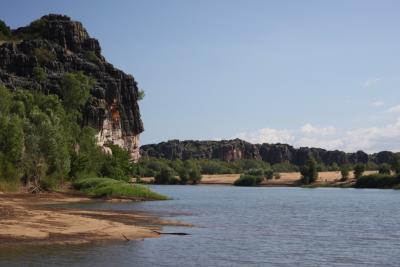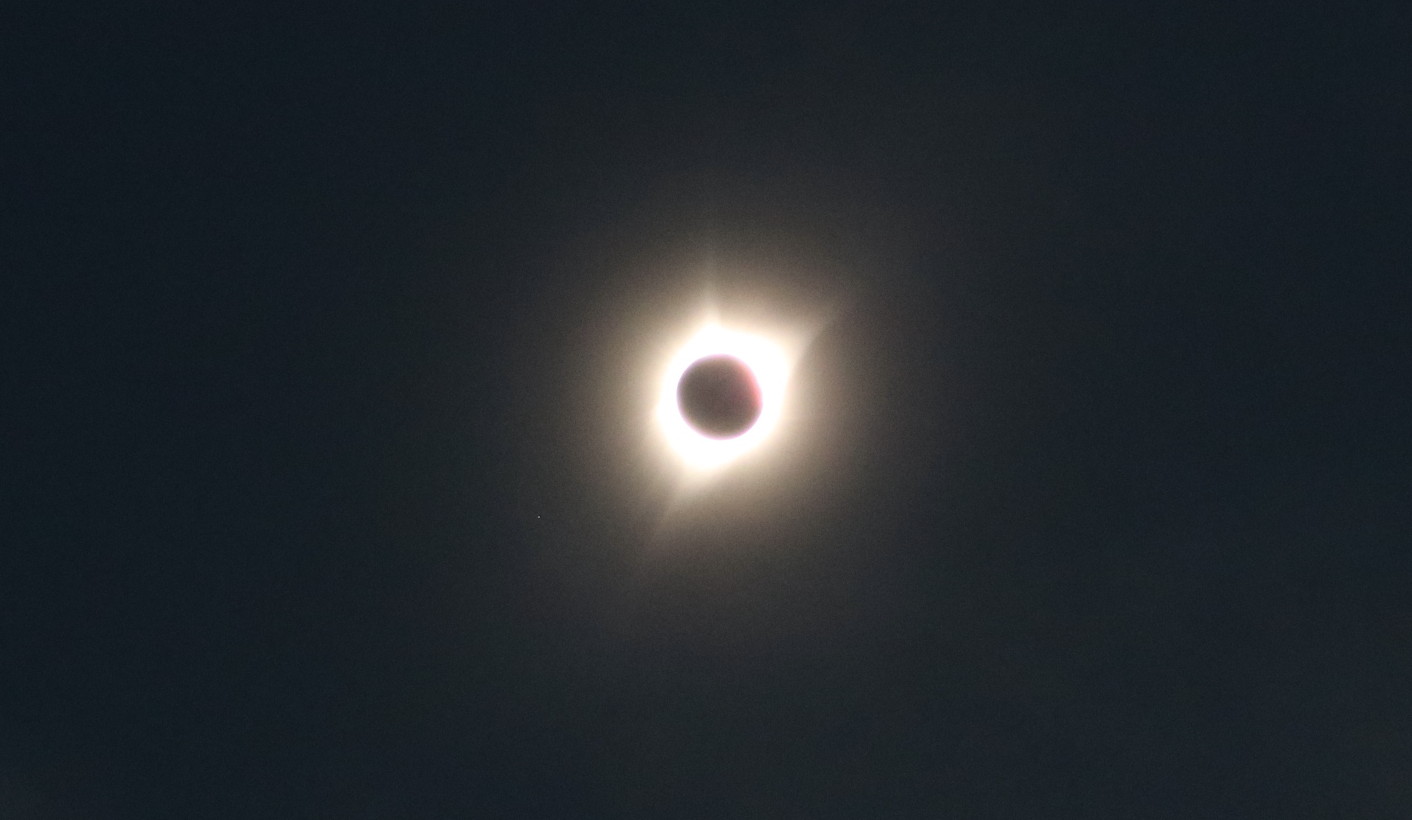Geikie Gorge
 Fitzroy Crossing is named for the place where people could ford the Fitzroy River. The Fitzroy River has cut a deep gorge to the north of this area which made crossing in that area impossible. Exiting the gorge the river deposits huge amounts of sand after each flood. Choked by all the sand, the Fitzroy River fans out into multiple channels which would make crossing the river difficult because the multiple channels are constantly shifting. After each flood the channels would move as sand was deposited in old channels the river would cut new channels in the sand elsewhere. So the place to cross the Fitzroy was just below the canyon where the river was fixed in a single channel exiting the gorge. Fitzroy Gorge and the area around it is now a national park. We were able to hike along the river to see some of the canyon walls. Our hike ended where the river entered the narrow point of the gorge.
Fitzroy Crossing is named for the place where people could ford the Fitzroy River. The Fitzroy River has cut a deep gorge to the north of this area which made crossing in that area impossible. Exiting the gorge the river deposits huge amounts of sand after each flood. Choked by all the sand, the Fitzroy River fans out into multiple channels which would make crossing the river difficult because the multiple channels are constantly shifting. After each flood the channels would move as sand was deposited in old channels the river would cut new channels in the sand elsewhere. So the place to cross the Fitzroy was just below the canyon where the river was fixed in a single channel exiting the gorge. Fitzroy Gorge and the area around it is now a national park. We were able to hike along the river to see some of the canyon walls. Our hike ended where the river entered the narrow point of the gorge.
The rocks that are the walls of the Fitzroy Gorge are somewhat unique. These rocks were formed when an ancient reef was buried deep under sediments. The reef was preserved by this burial and minerals deposited in the gaps in the reef made it a solid rock mass. As Australia was lifted and sea level dropped, erosion exposed the ancient reef. So these rocks don’t look like ordinary sedimentary rocks. They still show the structure of the ancient reef. This gives the walls of the gorge a really interesting and very rough shape.
I’ve seen reef formations in rocks before. In Missouri where we used to live there is a mining area in the southeastern part of the state called the Viburnum Trend. The reef there is almost 1000 feet underground. One of the minerals found in this reef is Galena. Galena is lead sulfide, PbS2. The mines are lead mines and have been quite productive over the years. Missouri produced more lead than any other country for many years. Of course today we know there are environmental problems that must be carefully addressed when mining and refining lead. Practices have changed but some of the harm to the people and environment remains in that part of the state. The last lead smelter in Missouri closed last year.
We enjoyed walking among these rock formations and seeing the ancient reef. When the Fitzroy floods the height of the water goes up over 50 feet within the gorge. As it emerges from the gorge the water spreads and its increase is over 20 feet in the parkland just below the gorge. This is truly a wild river. We are visiting at the end of the wet season, the beginning of the dry and the river is at a normal flow level. The next tropical storm will bring the next flood.
Leaving Fitzroy Crossing at noon we headed for Broome, the next town on our way south and west. The highway continued with many one lane bridges and now an added thrill, we’re seeing open range. Much of the highway has been open range but in this section the cattle are close along the road and of course a few are crossing the road. Road trains, the huge three and four trailer combinations that travel these roads all have huge grill assemblies that protect them when they hit these animals because they have no way to slow if one suddenly crosses in front of them. There were a few dead cattle along the road. Fresh ones are usually on their side or back with their legs sticking in the air. Older ones are in the process of being eaten by birds and other carrion eaters. I had to brake hard one time for a cow that suddenly decided she needed to be on the other side of the road. This experience then slowed us for other groups of cattle close to the road and there were many as we came into Broome. Coming into town late in the afternoon we also began to see kangaroos crossing the road. It makes driving much like a video game experience.
We were shocked by the prices for campgrounds in Broome. None offered free wi-fi and they were charging $45 per night. The norm in Australia has been $30 with a few charging a little more but we hadn’t seen any charging $45. So we tried several other parks. On our third try we found a park with a nightly fee of $37. I paid for a short term wi-fi so we could catch up with our internet business and family connections. The total for four nights was less than the $45 per night I would have spent at other parks.



0 Comments
Recommended Comments
There are no comments to display.
Please sign in to comment
You will be able to leave a comment after signing in
Sign In Now